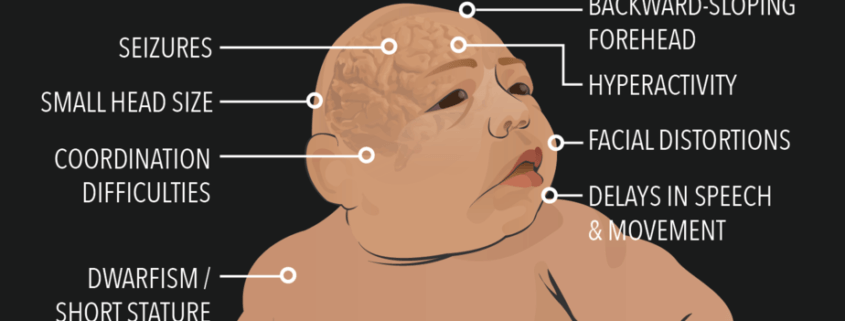Microcephaly
Microcephaly (my-kroh-SEF-uh-lee) is a rare neurological condition in which an infant's head is significantly smaller than the heads of other children of the same age and sex. Sometimes detected at birth, microcephaly usually is the result of the brain developing abnormally in the womb or not growing as it should after birth.
Microcephaly can be caused by a variety of genetic and environmental factors. Children with microcephaly often have developmental issues. Generally there's no treatment for microcephaly, but early intervention with supportive therapies, such as speech and occupational therapies, may help enhance your child's development and improve quality of life.
The primary sign of microcephaly is:
- A head size significantly smaller than that of other children of the same age and sex
Head size is measured as the distance around the top of the child's head (circumference). Using standardized growth charts, the measurement is compared with other children's measurements in percentiles.
Some children just have small heads, whose measurement falls as low as the first percentile. In children with microcephaly, head size measures significantly below average, possibly even below the first percentile for your baby's age and sex.
A child with more severe microcephaly may also have a backward-sloping forehead.

When to see a doctor
Chances are your doctor will detect microcephaly at the baby's birth or at a regular well-baby checkup. However, if you think your baby's head is smaller than normal or isn't growing as it should, talk to your doctor.
Microcephaly usually is the result of abnormal brain development, which can occur in the womb (congenital) or during infancy. Microcephaly may be genetic. Other causes may include:
- Craniosynostosis. The premature fusing of the joints (sutures) between the bony plates that form an infant's skull keeps the brain from growing. Treating craniosynostosis (kray-nee-o-sin-os-TOE-sis) usually means your infant needs surgery to separate the fused bones. If there are no underlying problems in the brain, this surgery allows the brain adequate space to grow and develop.
- Chromosomal abnormalities. Down syndrome and other conditions may result in microcephaly.
- Decreased oxygen to the fetal brain (cerebral anoxia).Certain complications of pregnancy or delivery can impair oxygen delivery to the fetal brain.
- Infections of the fetus during pregnancy. These include toxoplasmosis, cytomegalovirus, German measles (rubella) and chickenpox (varicella).
- Exposure to drugs, alcohol or certain toxic chemicals in the womb. Any of these put your baby at risk of brain abnormalities.
- Severe malnutrition. Not getting adequate nutrition during pregnancy can affect your baby's development.
- Uncontrolled phenylketonuria (fen-ul-kee-toe-NU-ree-uh), also known as PKU, in the mother. PKU is a birth defect that hampers the body's ability to break down the amino acid phenylalanine.

Some children with microcephaly are of normal intelligence and development, even though their heads will always be small for their age and sex. But depending on the cause and severity of the microcephaly, complications may include:
- Developmental delays, such as in speech and movement
- Difficulties with coordination and balance
- Dwarfism or short stature
- Facial distortions
- Hyperactivity
- Mental retardation
- Seizures
NOTE: The above information is for processing purpose. The information provided herein should not be used during any medical emergency or for the diagnosis or treatment of any medical condition. DISCLAIMER: This information should not substitute for seeking responsible, professional medical care.
Comments
Post a Comment